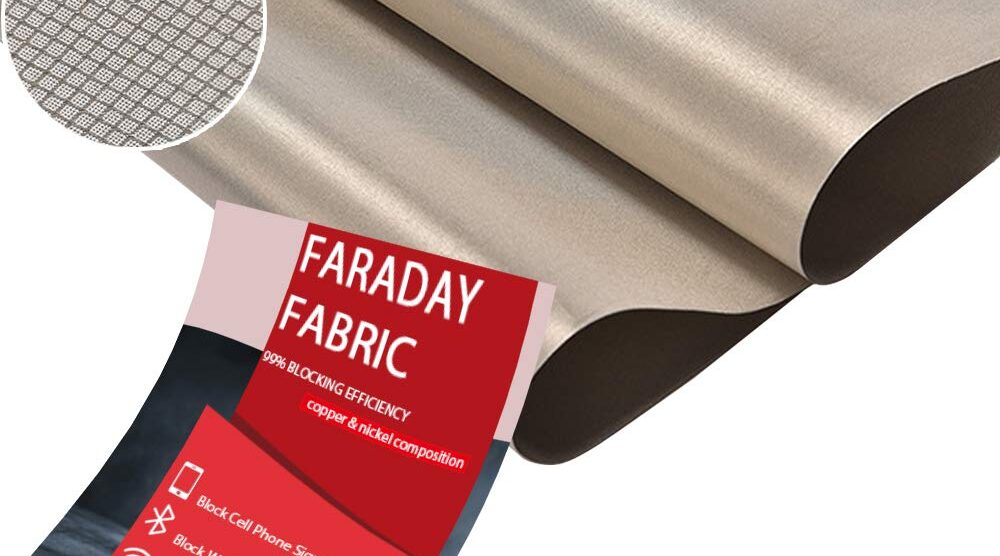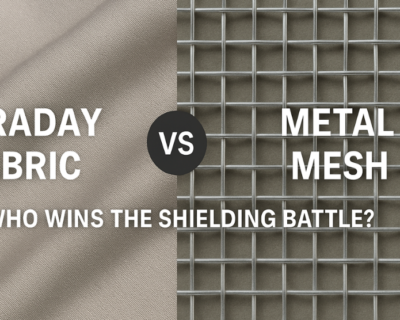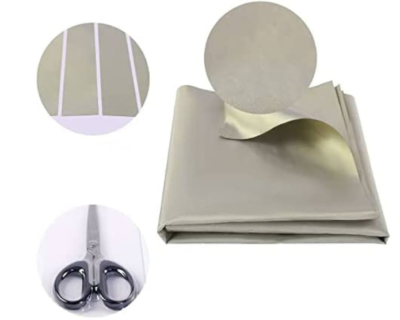Blogs

How Faraday Fabrics Can Help Stop Contraband Phones in Prisons
Contraband cell phones inside prisons are a major security risk. Inmates have used smuggled devices to run criminal operations, threaten witnesses, and even coordinate escapes. The problem has grown so serious that the Federal Communications Commission (FCC), in partnership with telecom experts and corrections officials, created a dedicated Contraband Phone Task Force to develop effective solutions.
While the Task Force explored technologies like Managed Access Systems (MAS) and jammers, one fundamental concept stood out: Shielding — the act of preventing radio frequency (RF) signals from entering or escaping a specific area.
That’s where Faraday Fabrics come into play.
What Are Faraday Fabrics?
Faraday fabrics are materials woven with conductive metals like copper, silver, or nickel that block electromagnetic signals. These fabrics create a Faraday cage effect — an enclosure that shields anything inside from RF radiation.
Faraday fabrics can be:
- Sewn into walls, drapes, and enclosures
- Lined inside pouches or bags
- Integrated into architectural structures for passive signal blocking
The Report: Signal Threats in Correctional Facilities
The Contraband Phone Task Force report highlights that:
- Jammers, though effective, are illegal in most U.S. settings due to interference risks.
- MAS systems are costly, complex, and vulnerable to network changes.
- Contraband phones are increasingly connecting via WiFi and hotspots, bypassing traditional cellular blocks.
- Some areas within prisons (under construction or poorly covered) remain vulnerable even after tech solutions are deployed.
So, what’s the missing layer?
Passive Protection with Faraday Fabrics
Technology alone isn’t always enough. That’s where Faraday fabrics can add physical, passive security. Here’s how:
1. Shielded Storage Rooms
Storing seized phones in Faraday-lined cabinets or rooms ensures zero network reconnection.
2. Cell Blocks and Visitation Areas
Lining cell walls or visitor holding areas with Faraday fabric can create a signal-free zone — reducing the ability to send or receive texts and calls.
3. Portable Shielded Pouches
Faraday pouches can be used by guards to immediately isolate confiscated devices or carry electronics safely in and out of secure zones.
4. WiFi Blockage
As inmates turn to WiFi-based communication, Faraday fabrics can help limit the range and effectiveness of rogue hotspots within facilities.
Why Choose Faraday Fabrics?
- No power required — Unlike jammers or MAS, fabrics work passively.
- No legal hurdles — FCC bans on jammers don’t apply to passive shielding.
- Cost-effective — Install once and maintain easily.
- Scalable — Use in one cell, an entire block, or even vehicle interiors.
Applications Beyond Prisons
While correctional facilities are a high-priority use case, Faraday fabrics are also valuable for:
- Government offices
- Military operations
- EMF-sensitive environments
Secure meeting rooms
Final Thoughts
The fight against contraband phones is a layered one. While technology like MAS and carrier coordination are essential, physical signal blocking adds a powerful, affordable shield to the security arsenal. If you’re looking for real-world, passive solutions that don’t break laws or budgets, Faraday Fabrics should be your first line of defense.
Explore our Faraday Fabric range today — and help seal the signal leaks.
📩 Contact us for custom shielding solutions. Reference to the Article: https://api.ctia.org/wp-content/uploads/2019/04/Contraband-Phone-Task-Force-Status-Report-Combined.pdf
Ready to Buy?
Get in touch with our sales team for custom sizes, bulk pricing, or technical assistance:
#FaradayFabric #PrisonSecurity #ContrabandPhones #SignalBlocking #RFShielding #CorrectionalFacilities #PassiveProtection #SecuritySolutions #FCC #DOMADIA




